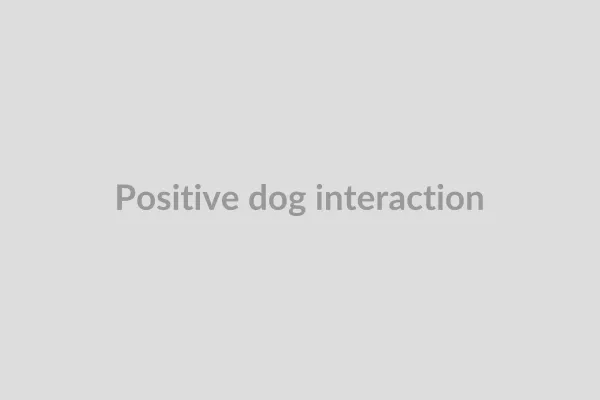Teaching your dog to “come” is one of the most fundamental and critical commands for their safety and your peace of mind. While the basic concept of recall training might seem straightforward, achieving a consistent and reliable response, especially in distracting environments, often proves challenging for dog owners. Many begin with a strong recall, only to see it deteriorate over time, leaving them frustrated when their dog barely acknowledges their call. Whether you’re just starting out with a new puppy or aiming to fix a “broken” recall with an older dog, understanding the core principles of effective training is key to success. A solid recall ensures your dog’s safety in off-leash situations and strengthens the bond between you. Learning how to teach your dog to come no matter what involves consistency, positive reinforcement, and a strategic approach to practice.
The Golden Rule: Enforce Every “Come” Command
One of the most crucial principles in recall training is never to utter the command “come” unless you are absolutely certain you can enforce it. The trick to a reliable recall is convincing your dog that when you call, coming to you is not optional—it’s an undeniable expectation. This means creating a habit so ingrained that your dog doesn’t even have to think about it. Each time your dog ignores the command and gets away with it, you inadvertently teach them that “come” is merely a suggestion, not a command. Therefore, consistency in enforcement is paramount to building a strong foundation.
Practice Makes Perfect (and Reliable Recalls)
Consistent and structured practice is the backbone of a strong recall. It’s not about making practice sessions lengthy or arduous, but rather about making them regular and progressive. By systematically introducing distractions, you can gradually build your dog’s reliability in various environments.
Start with Low Distractions
Begin your training in a quiet, familiar environment, like your home, where distractions are minimal. Initially, keep your dog on a leash. Enthusiastically call them, offering praise or a treat when they come. Once they are responding 100% of the time on-leash, you can practice off-leash within the safe confines of your home. This foundational stage helps your dog understand the command’s meaning without overwhelming external stimuli.
Gradually Increase Distractions
As your dog masters the “come” command in a low-distraction setting, it’s time to incrementally introduce more challenging environments. When moving to a new, more distracting area—such as your backyard or a quiet neighborhood street—always put the leash back on. This allows you to maintain control and enforce the command reliably. Once your dog consistently responds on-leash in this new setting, you can then progress to using a long line (a long training leash or clothesline). This allows for greater freedom while still providing the means for gentle guidance if needed. If you’re wondering how do i teach my dog to come in varied situations, this systematic progression is essential.
 Dog on a long line practicing recall in a park setting
Dog on a long line practicing recall in a park setting
Imagine taking your dog to a local park. There are numerous new sights, sounds, and smells. Here, they go back on a long line. The pattern is clear: every time you increase the level of distraction, you return to square one, with the leash or long line on. This method ensures that your dog learns to generalize the “come” command across different scenarios, always knowing that compliance is expected.
Short, Frequent Sessions
Effective practice doesn’t require hours of dedicated training. Instead, aim for several short sessions throughout the day, each lasting about 5-10 minutes. Within each session, work in 10-15 recalls. The consistency of these brief, positive interactions will reinforce the behavior much more effectively than infrequent, lengthy sessions that can lead to boredom or frustration for your dog.
Make Coming to You a Highly Rewarding Experience
For your dog to enthusiastically respond to your call, they must associate coming to you with incredibly positive experiences. When they return, lavish them with praise, offer high-value treats, or engage in a quick game of fetch with their favorite toy. The goal is to make coming to you the most exciting and rewarding thing they could possibly do.
Equally important is what happens after they come. Once you’ve rewarded them, let them go back to whatever activity they were enjoying before you called. You never want your dog to learn that “come” signifies the end of fun. If every recall leads to them being put away, taken home, or having their play cut short, they’ll quickly become hesitant to respond. Instead, call them, praise and reward them, and then encourage them to return to sniffing that fascinating bush or playing with their friends. This teaches them that listening to your command not only brings good things but also preserves their freedom and enjoyment.
“Come” Means “Come Here and Let Me Grab Your Collar”
Have you ever witnessed a dog owner call their pet, only for the dog to run just out of reach, playfully dancing away? This “recall dance” can be both frustrating and dangerous. To avoid this, teach your dog that “come” specifically means “come here and let me gently grab your collar.” When you’re training, make it a point to softly touch or take hold of their collar before you give them their reward. This crucial step solidifies the expectation that coming to you involves physical contact, eliminating the game of chase. For more details on how to teach your dog how to come effectively, this specific action is often overlooked.
 Person gently holding a dog's collar during a training session
Person gently holding a dog's collar during a training session
Alternatively, you could teach them that “come” means to come directly to your side and sit still. Both techniques prevent your dog from developing the frustrating habit of avoiding capture once they’ve approached. This small but significant addition to your training routine ensures that when your dog comes, they are truly within your control.
When NOT to Call Your Dog Off-Leash
A critical aspect of building a reliable recall is knowing when not to call your dog. If you are less than 90% sure your dog will listen, especially in high-distraction environments, do not call them off-leash. For instance, if you’ve only trained with moderate distractions and you’re at a dog park where your dog is deeply engrossed in play, calling them when you know they’re unlikely to respond only reinforces the idea that “come” is optional. Each time they ignore you, that habit of ignoring strengthens.
Instead of repeatedly calling “Fido, come! Come on!” while they cheerfully ignore you, remember the first golden rule: if you can’t enforce it, don’t say it. In such situations, calmly walk over to your dog and retrieve them yourself, ensuring the experience is positive and low-stress. However, if you have them on a long line, you can gently reel them in while giving the “come” command. Once they reach you, praise them lavishly, and then quickly let them return to their play. This reinforces the command positively without allowing them to practice ignoring you. This mindful approach is key for anyone asking how to teach your dog to come back to you consistently.
 Happy dog running towards owner in an open field
Happy dog running towards owner in an open field
The Other Golden Rule: Never Punish Your Dog for Coming
This rule is just as vital as the first: never, under any circumstances, call your dog to punish them. It doesn’t matter how angry, frustrated, or tired you are. Calling your dog to yell at them, scold them for digging up the lawn, or angrily put them in their kennel is the quickest way to shatter their recall reliability. Your dog won’t associate the punishment with their earlier transgression; they will associate it with the act of coming to you. This creates a powerful negative association, making them wary and hesitant to respond in the future.
On a similar note, avoid calling your dog if you are about to do something unpleasant that they dislike. If your dog hates baths, don’t call them when it’s bath time. If they dislike being crated, don’t use the “come” command right before you put them in their crate for eight hours. These situations will have the same detrimental effect as direct punishment, teaching your dog that responding to your call leads to undesirable outcomes. In these instances, it’s always better to simply go and retrieve your dog yourself, without using the “come” command. Understanding how do you teach your dog to come reliably means building trust and positive associations.
 Person petting a dog lovingly, reinforcing a positive interaction
Person petting a dog lovingly, reinforcing a positive interaction
Conclusion
Building a strong, reliable recall for your dog is a journey that requires patience, consistency, and a deep understanding of dog behavior. By consistently applying the golden rules—always enforcing the command when given, making every return a positive experience, and never associating “come” with punishment or unpleasantness—you will lay a robust foundation for success. Start with minimal distractions and gradually work your way up, always ensuring you can enforce the command. Remember that short, frequent practice sessions are more effective than infrequent, long ones. With these pointers and a commitment to positive reinforcement, you are guaranteed to see significant improvement in your dog’s recall, fostering a safer and more harmonious relationship. Continue to practice diligently, and you’ll soon enjoy the freedom and confidence that comes with a dog who reliably returns to your side every time you call.
